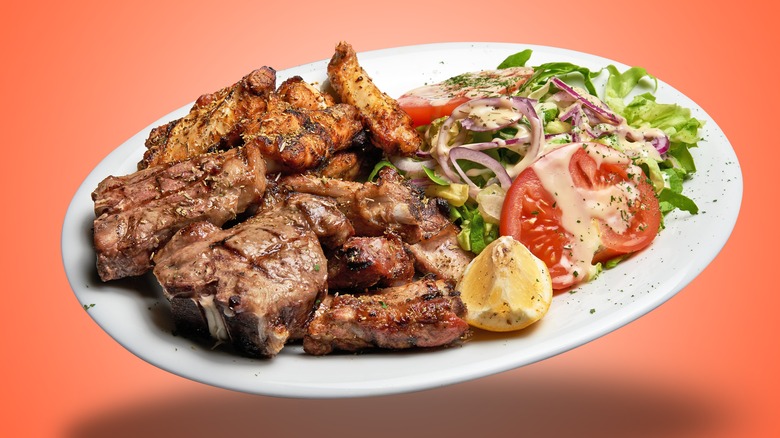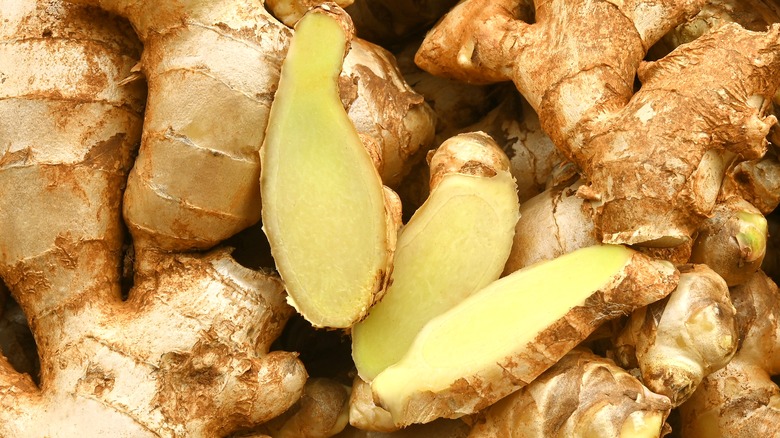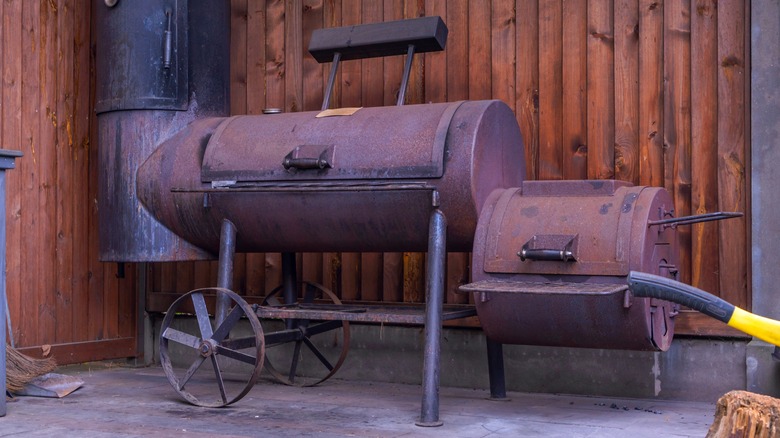What Makes Hawaiian Smoked Meat So Unique?
News flash: Hawaiians, like pretty much anybody else on the planet, love smoked pork. And how could they not? Succulent, sweet chunks of meat redolent with wood smoke are universally appetizing. But there is something about the process of what islanders refer to as "smoke meat" that is unique to Hawaii, and it doesn't have anything to do with the actual smoking part: It happens before and after. Hawaiian smoked meat is distinguished by its sweet and salty marinade as well as a post-smoke stir fry with onion slices.
Even the wood used to make smoke meat is peculiar to Hawaii — primarily kiawe, a small, spreading tree related to mesquite. Sometimes strawberry guava wood (known locally as waiawi) is also used; both impart a tart, slightly sweet flavor to the meat. To underscore the fruitiness, guava jelly is sometimes included in the onion stir fry at the end of the smoke meat cooking process. But let's start at the beginning: What's in that marinade that makes it special?
A little salty, a little sweet, and completely tender
A typical smoke meat marinade consists of brown sugar, shoyu — a Japanese-style soy sauce made with fermented soybeans, toasted wheat, salt, and water — and minced fresh garlic and ginger. Slices of pork butt, cut about 2 inches thick by 8 to 10 inches long, are marinated overnight or up to 24 hours. (Sometimes the meat is rubbed with a brick-red Hawaiian volcanic clay salt called Alaea first, a holdover from the ancient practice of making kalua pig in a covered pit called an imu, a time-intensive technique now reserved for very special occasions.)
The salt in the shoyu is a time-tested meat tenderizer(it accomplishes this by drawing out the juices, which are then reabsorbed, breaking down muscle proteins), but you might not know that ginger does the job in another way. This is due to the presence of an oddly named proteolytic enzyme called zingibain. The chemistry gets rather complicated, but the smoke meat is rendered succulent.
A stir-fried flourish
After a lengthy marinade, the smoke meat is, well, smoked — until the marinating liquid is reduced to a glaze and the pork slices assume that appetizing smoky-pink color. Only then is it ready for the last, but no less important cooking step: A flash stir fry with sliced onions. The point of this exercise is (clearly) not to continue cooking the meat so much as it is to get the onions to the stage where they begin to caramelize, adding both an earthy depth and sweetness to the meat. At this point, the dish can be finished with the aforementioned guava jelly or oyster sauce.
We've checked, and all the specific ingredients involved in making smoke meat — kiawe and strawberry guava wood chunks, shoyu, and Alaea salt — are available online. It's best to use an offset or indirect smoker to really infuse the meat with smokiness; low and slow is always the way to go when smoking pork, so keep your smoker temperature at or near 225 degrees Fahrenheit. A shoulder of pork will be done when it reaches an internal temperature of 190 degrees Fahrenheit.


